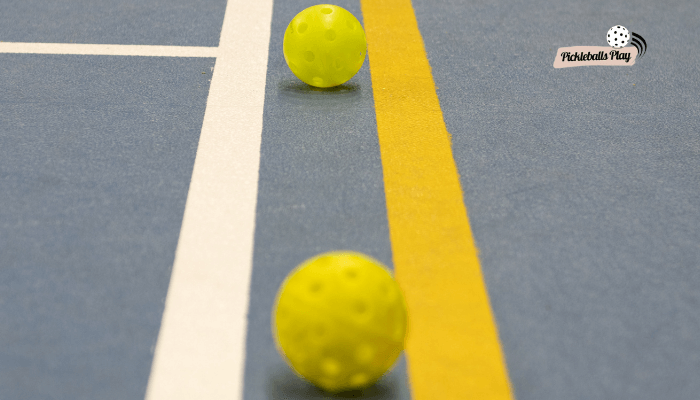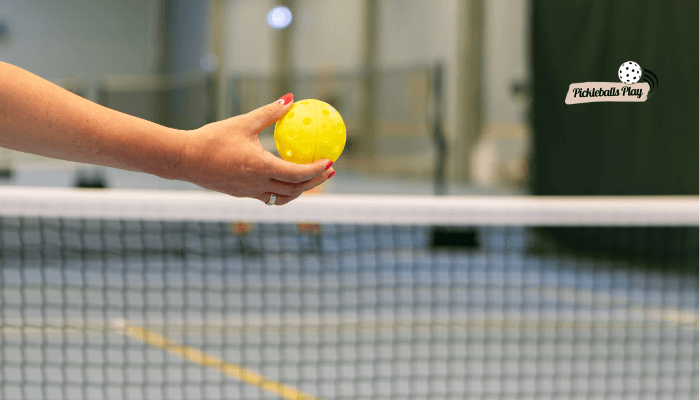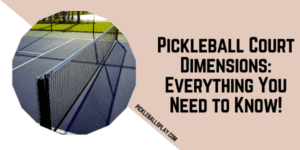The Battle of the Balls: Which is Better?
Are you a pickleball enthusiast torn between indoor and outdoor balls? Well, look no further because we’ve got you covered! In this article, we’ll dive into the significant differences between these two types of pickleballs, helping you make the right choice for your game. So let’s get started!
Major Differences: Indoor vs. Outdoor Pickleball Balls
Indoor and outdoor pickleball balls may seem similar, but trust us when we say they differ significantly. Let’s take a closer look at these major differences:
| Feature | Indoor Pickleball Balls | Outdoor Pickleball Balls |
|---|---|---|
| Number of Holes | A smaller number of holes | A larger number of holes |
| Diameter | Smaller (typically 0.43 inches) | Slightly larger (typically 0.282 inches) |
| Weight | Lighter | Heavier |
| Hardness | Softer and less dense | Harder and denser |
| Durability | Less durable | More durable |

Hole Numbers
The number of holes in the pickleball balls used for indoor play differs from those used for outdoor play.
Indoor balls typically have 26 holes, while outdoor balls have 40 holes. This difference helps optimize gameplay in different environments. The extra holes in outdoor balls allow them to move swiftly in windy conditions or over rough surfaces. On the other hand, indoor balls are heavier and slower, providing a balanced competitive experience.
Diameter
The size and diameter of the ball are crucial elements in pickleball. Indoor balls are slightly larger, measuring 0.43 inches, while outdoor balls have a diameter of 0.282 inches.
These size differences allow players to adapt their strategies based on the playing surface. Additionally, durable plastic pickleballs last longer outdoors, making them more resilient on complex surfaces like asphalt or concrete courts.
Material
When it comes to choosing the right ball for your game, consider the weight. Indoor pickleballs are lighter, weighing around .8 ounces or 22.7 grams, which results in a faster-paced game. Outdoor balls, on the other hand, average 1 ounce or 28 grams, leading to slower gameplay.
Furthermore, the material composition of the balls differs. Indoor balls are predominantly made of plastic, while outdoor balls have a rubberized surface for better rebound on court surfaces like concrete or asphalt.
Proper care and storage are crucial. Indoor balls should be stored at room temperature, while outdoor ones should be protected from direct sunlight to prevent fading.
Hardness
Indoor pickleball balls are softer and designed not to leave marks on floors or walls. They also move at a slower speed, creating a more enjoyable learning experience.
Outdoor balls, on the other hand, are harder and made of plastic or rubber, providing increased durability. These balls have a faster speed, making them the perfect challenge for experienced players.
Some outdoor balls even have tiny holes throughout the surface, allowing air to flow through them, resulting in longer distances when struck by paddles during play.

Durability
Pickleball balls are built to withstand both indoor and outdoor play, ensuring long-lasting durability. Most commonly, these balls are made of plastic composite material, offering excellent performance on any surface. They also have a higher bounce rate, keeping the game going for longer.
Some balls are specifically designed for either indoor or outdoor play, with different bounce characteristics. Manufacturers now use UV-protected materials to enhance the balls’ longevity outdoors, allowing them to withstand harsh weather conditions.
Remember, regular cleaning and maintenance are essential to maintain the durability and performance of your pickleball balls over time.
Frequently Asked Questions
Is indoor pickleball different than outdoor?
Yes, indoor pickleball is different from outdoor. Indoor pickleball is typically played on a hardwood court with no wind and a lower ceiling, leading to slower gameplay. Outdoor pickleball, on the other hand, is played in open spaces with varying weather conditions, resulting in faster-paced play.
Can pickleball be played on the gym floor?
Absolutely! Many gyms have painted pickleball courts on their floors and provide the necessary equipment. It’s important to check with the gym to ensure that pickleball is allowed and to comply with any rules or regulations.
What sport is closest to pickleball?
The sport most similar to pickleball is badminton. Both involve hitting a ball (or shuttlecock) back and forth over a net, and they share similarities in court size, serve technique, and rules of play.
Conclusion
In conclusion, indoor and outdoor pickleball balls have significant differences in terms of hole numbers, diameter, weight, hardness, and durability. When choosing the right ball for your playstyle, consider the playing environment and your preferences. Pick your ball wisely, and we’ll see you on the courts!




